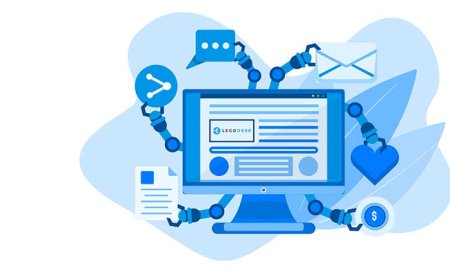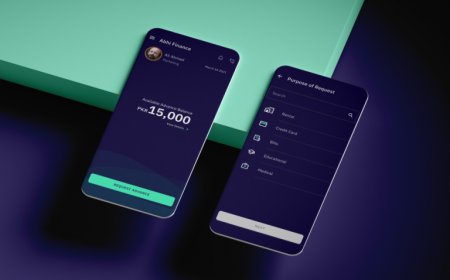Effective Loyalty Program Management for Business Growth
One of the most effective ways to achieve this is through well-designed and strategically executed loyalty program management.

In todays fast-paced digital economy, acquiring new customers is only half the battleretaining them is the real key to long-term success. As brands compete fiercely for attention and loyalty, businesses must prioritize building lasting customer relationships. One of the most effective ways to achieve this is through well-designed and strategically executed loyalty program management. When done right, loyalty programs don't just incentivize repeat purchasesthey foster emotional connections, drive engagement, and ultimately increase profitability.
For many brands, loyalty programs have evolved from simple point-collection systems into comprehensive customer engagement platforms. However, launching a program is only the beginning. Managing it effectivelyaligning it with your brands values, continuously optimizing rewards, and leveraging data for personalizationcan make the difference between a stagnant initiative and a high-performing engine for growth.
What is Loyalty Program Management?
Loyalty program management refers to the ongoing process of planning, implementing, analyzing, and optimizing customer loyalty programs. It includes everything from setting up reward rules and segmenting users to measuring performance and updating program features based on changing customer behavior and market trends.
Good management ensures that the program stays relevant, engaging, and aligned with business objectives. Whether you're operating a point-based system, a tiered program, or offering experiential rewards, consistent oversight and strategic updates are vital to its long-term success.
Why Loyalty Program Management Matters
The initial launch of a loyalty program often gets a lot of attention, but many brands fail to maintain momentum. Without proper management, participation may decline, rewards may lose their appeal, and the overall impact on customer retention may diminish.
Heres why effective loyalty program management is critical:
-
Sustains Customer Engagement
Continual refinement of rewards, offers, and experiences keeps customers interested and active within the program.
-
Drives Repeat Business
Incentivizing repeat purchases and larger basket sizes contributes to steady revenue growth.
-
Enhances Customer Insights
Managed programs generate data that reveals preferences, buying habits, and patternscrucial for personalization.
-
Increases Brand Advocacy
Loyal customers are more likely to become brand ambassadors, leaving positive reviews and referring others.
-
Aligns with Business Objectives
Proper management ensures the program supports sales targets, marketing campaigns, and customer service initiatives.
Core Elements of Loyalty Program Management
To successfully manage a loyalty program, businesses should focus on the following components:
1. Program Design and Structure
Start with a program that fits your business model and resonates with your target audience. This includes choosing the right structurepoints-based, tiered, cashback, paid membership, or experience-driven.
Ensure that your loyalty programs rules, benefits, and branding align with your companys identity and value proposition. This sets the tone for long-term engagement and trust.
2. Reward Strategy
Rewards must be desirable, attainable, and relevant. Regularly review what your customers valuewhether thats discounts, exclusive products, early access, or experiential perksand adapt accordingly.
Effective loyalty program management includes rotating offers, introducing surprise rewards, and testing new incentives to maintain excitement and drive action.
3. Customer Segmentation
Segment your audience based on behavior, preferences, location, or lifetime value. Use this information to tailor communication and rewards that feel personal and meaningful.
For instance, high-value customers may receive VIP treatment, while new members might get welcome offers to encourage their first repeat purchase.
4. Communication and Promotion
A loyalty program is only effective if customers know about it and are reminded of its value. Create a communication plan across multiple channelsemail, SMS, in-app messages, and social media.
Highlight benefits, showcase member success stories, and provide regular updates on point balances or upcoming rewards to keep the program top-of-mind.
5. Technology and Integration
Choose a loyalty platform that integrates seamlessly with your eCommerce, CRM, POS, and analytics tools. This ensures real-time tracking of transactions, reward issuance, and customer behavior.
Automation also plays a key roletriggered messages, birthday rewards, and redemption reminders can all be managed efficiently with the right tech stack.
6. Performance Monitoring and Analytics
Data is your most powerful tool. Monitor KPIs such as program participation rate, redemption rate, repeat purchase rate, and customer lifetime value.
Use these insights to refine your strategy over time. For example, if redemption rates are low, it may indicate that rewards are either too difficult to attain or not valuable enough.
In fact, businesses with Effective Loyalty Programs often report improved customer satisfaction and retention after refining reward thresholds and introducing tiered benefits.
7. Continuous Optimization
Markets change, customer preferences shift, and technology evolves. Regularly review the effectiveness of your program and be ready to pivot when necessary.
Conduct A/B tests, gather customer feedback, and track trends to ensure your program remains competitive and engaging.
Challenges in Loyalty Program Management
Despite the benefits, managing a loyalty program can present challenges:
-
Lack of Engagement: Customers may lose interest if rewards become repetitive or unattainable.
-
Budget Constraints: Balancing cost-effectiveness with attractive rewards requires strategic planning.
-
Data Overload: Too much data without clear analysis can hinder decision-making.
-
Technology Gaps: Poor integration across systems can lead to inaccurate tracking and missed opportunities.
Overcoming these obstacles requires a commitment to continuous learning, investment in the right tools, and a customer-first mindset.
Best Practices for Success
To ensure your loyalty program management delivers strong results:
-
Start with Clear Goals: Define what success looks likemore repeat purchases, higher spend per customer, increased referrals, etc.
-
Keep It Simple: Make it easy for customers to understand how the program works and how to earn rewards.
-
Deliver Value Early: Offer quick wins to encourage early engagement.
-
Celebrate Milestones: Recognize anniversaries, birthdays, and member achievements.
-
Listen to Feedback: Use surveys and reviews to shape your ongoing strategy.
Final Thoughts
Loyalty programs have moved beyond simple discountsthey are now vital tools for building long-term relationships and creating emotional connections with customers. However, launching a program is only half the battle. The true value lies in loyalty program management, where continuous optimization, data-driven insights, and personalized engagement come together to deliver exceptional results.
With the right approach, tools, and commitment, businesses can turn one-time buyers into lifelong brand advocates. Whether you're running a small retail shop or a global eCommerce brand, mastering loyalty management is a strategic step toward sustainable growth.
















![Top 9 Real Estate Mobile App Developers in Riyadh, Saudi Arabia [2025 Edition]](https://www.biphoo.uk/uploads/images/202507/image_430x256_6879d0d524335.jpg)




















